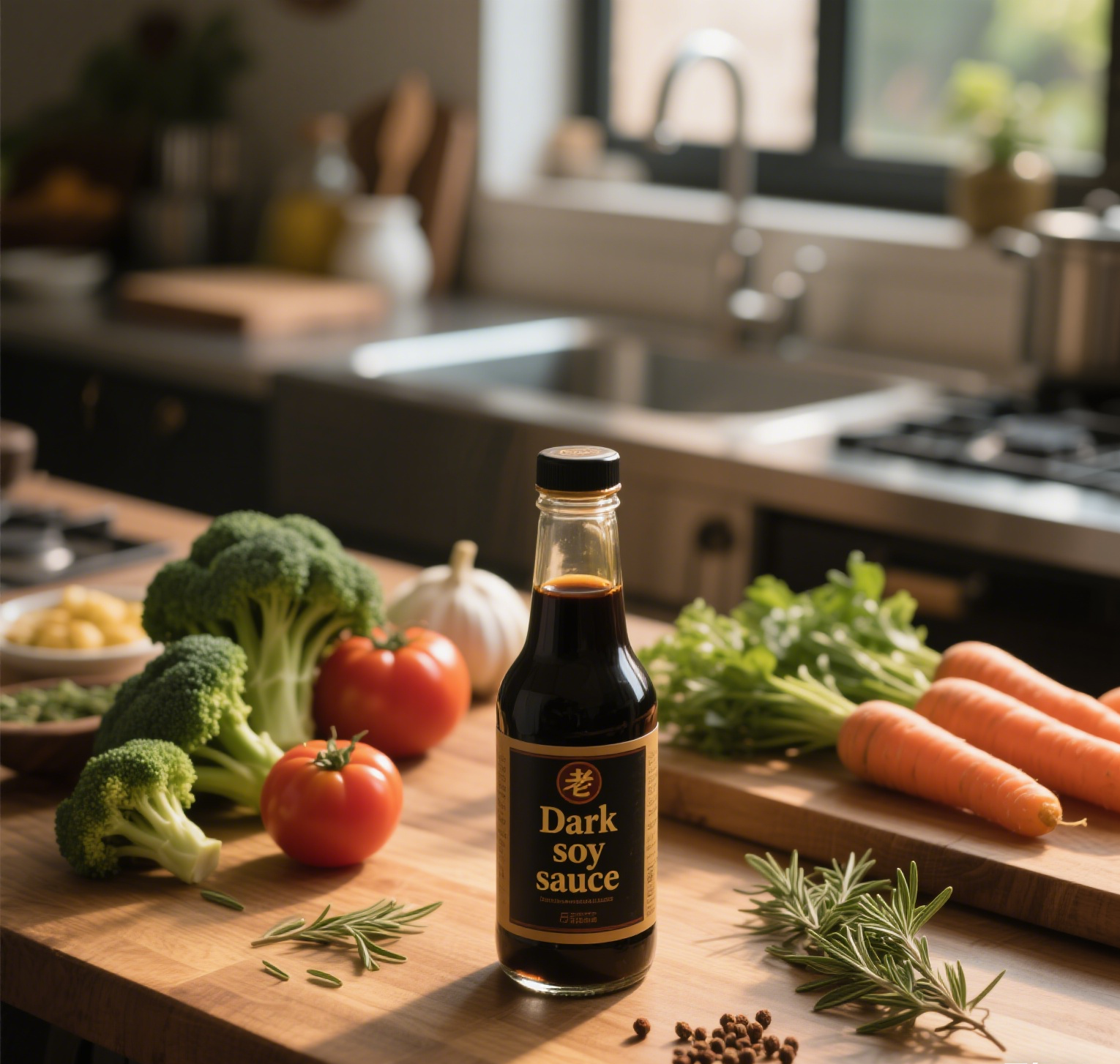The Liquid Ruby of Asian Cuisine
Dark soy sauce isn’t just a condiment—it’s an alchemist’s brew that turns ordinary dishes into masterpieces. Imagine if Willy Wonka made a savory version of his chocolate river—that’s essentially what’s inside this mahogany-colored elixir. But what exactly gives this Asian staple its signature umami punch and viscosity thicker than a Shakespearean plot?
The Fab Four Core Ingredients
- Soybeans (The Protein Powerhouse)
- These humble legumes undergo a fermentation process longer than some celebrity marriages. Soybeans provide the amino acids that create dark soy sauce’s deep, savory flavor profile—nature’s original MSG!
- Wheat (The Sweet Counterbalance)
- The Robin to soybeans’ Batman, wheat adds subtle sweetness and helps develop that complex caramel aroma. It’s the reason your stir-fry smells like a street food vendor’s wok in Bangkok.
- Salt (The Preservative Maestro)
- Comprising about 18-20% of the brew, salt does double duty: it prevents microbial party crashers during fermentation and enhances flavors like a culinary hype-man.
- Water (The Silent Conductor)
- Often overlooked like the bassist in a rock band, water facilitates the 3-6 month fermentation process where magic happens.
Golden phrase alert: “Dark soy sauce is basically a soybean’s midlife crisis—aged, complex, and infinitely more interesting.”
The Supporting Cast
- Molasses/Caramel (for color): The “fake tan” of sauces, giving that characteristic ebony hue and slight sweetness.
- Mushroom Extract (in premium varieties): Adds an earthy depth that would make a truffle jealous.
- Preservatives (in commercial brands): Like bouncers at a club, they keep unwanted microorganisms out.
Why Your Kitchen Needs This
Unlike its lighter cousin, dark soy sauce has been fermented until it achieves a viscosity rivaling maple syrup and a flavor more layered than a mille-feuille. It’s the secret weapon in:
- Creating lacquered char siu pork that glistens like a new sports car
- Building the foundation of pho broth with its caramelized depth
- Turning humble fried rice into an umami bomb
Pro tip: “Using dark soy sauce is like adding a bass boost to your dishes—everything becomes richer, deeper, and more harmonious.”
DIY Alert: Spotting Quality
A good bottle should:
- List soybeans as the first ingredient (not “hydrolyzed protein”)
- Have a clean, molasses-like aroma without chemical notes
- Coat the back of a spoon like a fine wine
Remember: “Life’s too short for bland food—and cheap soy sauce.” Whether you’re making pad see ew or braised short ribs, this Asian pantry essential proves that sometimes, the darkest ingredients create the brightest flavors.
